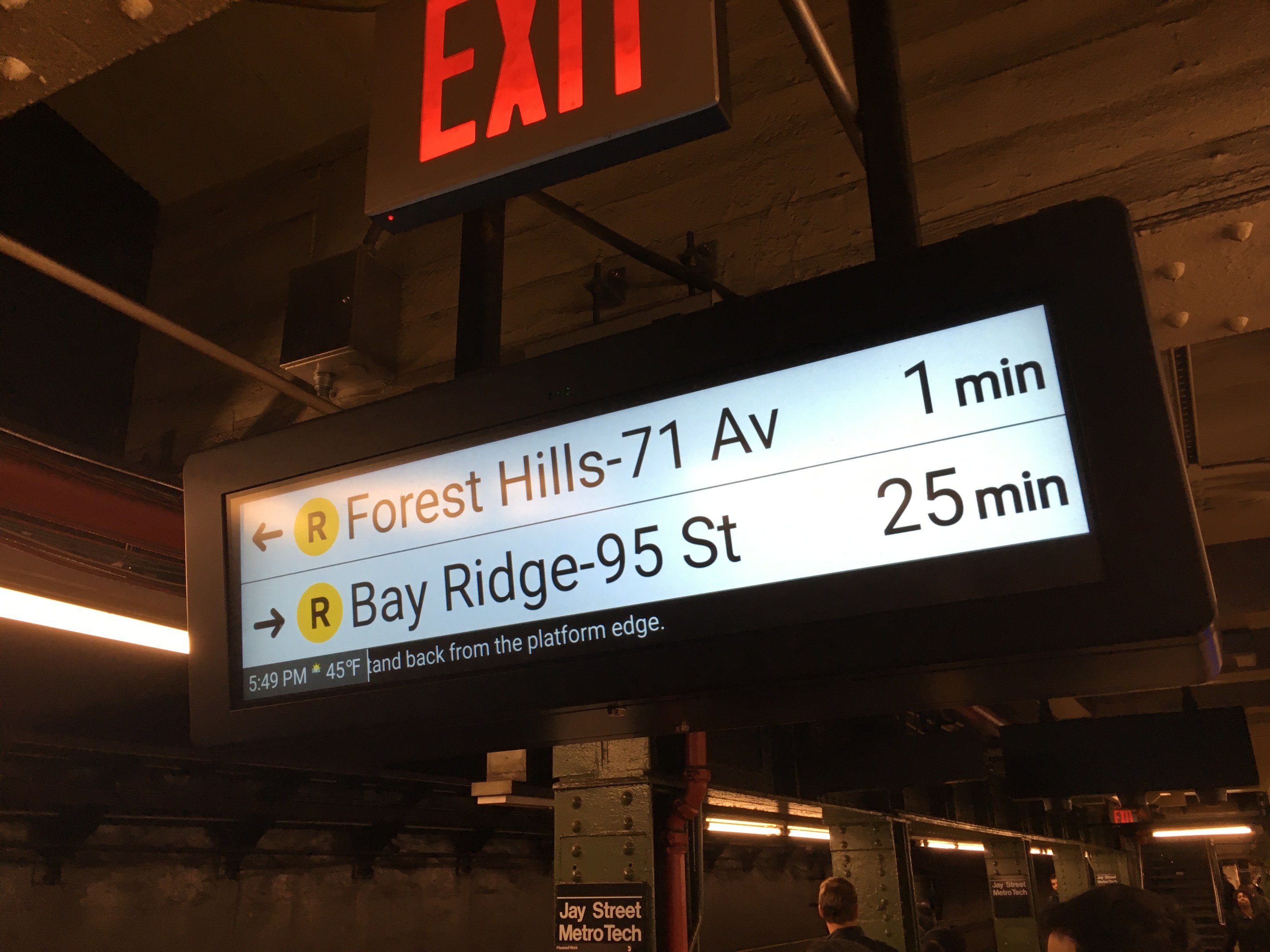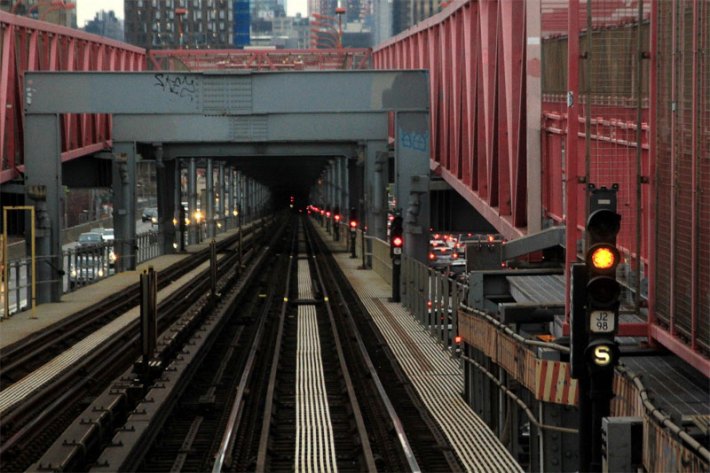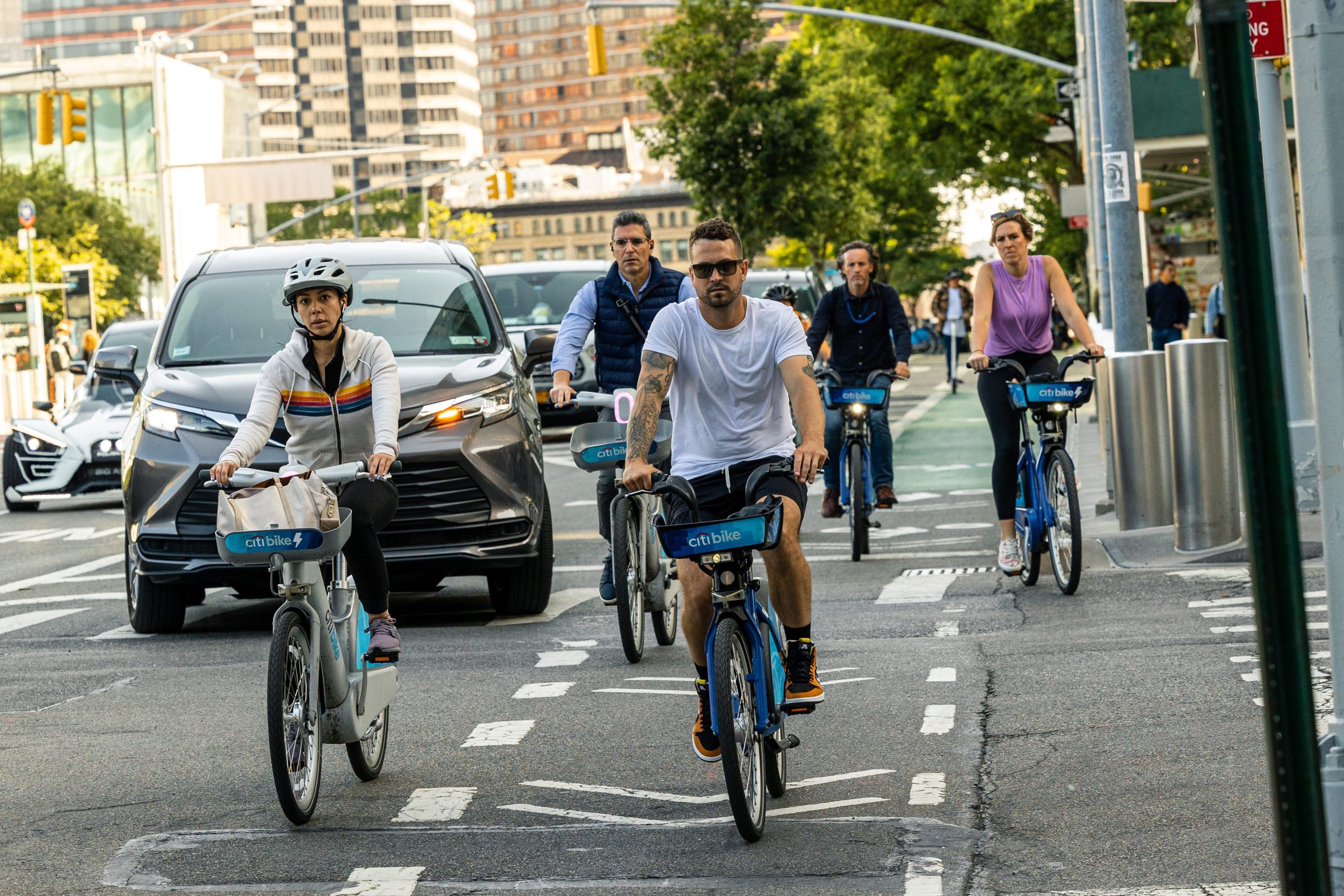Last week, Uday Schultz, a junior at St. Ann's School, took the top prize at TransitCenter's annual TransitSlam with a presentation about the MTA's excessive use of signals that cap subway speeds, which he produced with his classmate, Ivan Specht. We're pleased to present a blog-ified version of their show below.
For the first time in a generation, New Yorkers are giving up on the subway as severe delays mount and reliability plummets. The trains have simply ceased to be a predictable way to get around the city.
If we are to stop this mayhem, a massive rethink of how our transit system is operated, funded, and managed is needed. But there are also basic steps we can take in the short run to improve service. One of these steps is the rationalization of subway timers.
These signals, which limit train speeds, have been installed unnecessarily, lengthening trip times and hampering subway reliability.
To understand how these devices came to be such a problem, let's start back in the 1990s. Two fatal train crashes that decade resulted from subways traveling at excessive speeds. In response, the National Transportation Safety Board urged the MTA to address the issue "by converting more automatic signals to grade time signals."
Instead of simply regulating the distance between trains, grade time signals place strict speed limits on trains. The idea was to prevent crashes by adding these signals in areas where excessive speed could be deadly -- near sharp curves, on steep hills, and at busy junctions.
Initially, that's what the MTA did, and there was a logic to the placement of the new, speed-limiting signals. However, the agency did not stop there. The MTA kept adding timers, even to safe areas of track.
The effects are twofold. Most directly, these speed restrictions have lengthened subway trips. Take the 5 train, which serves the busiest subway corridor in the nation. In 2005, a trip from 180th Street to 149th Street took nine minutes. Today, it takes 11 minutes. Similarly, going from Grand Central to Brooklyn Bridge in 2005 took 10 minutes; today it takes 12.
It may not sound like much, but these small increases in travel time compound across the whole subway system, adding up to countless hours lost for riders.
More relevant to the current crisis, timer signals have made the system significantly less reliable. Before their proliferation, a late train could make up time by going just a bit faster. Today, all trains -- late or not -- have to constantly slow for these speed checkpoints. Trains that fall behind schedule stay behind, preserving service gaps, adding to crowding, and making commutes miserable.
In a city obsessed with time and speed, this unnecessary slowdown is unacceptable. To get subway service back to where it needs to be, something must be done about it.
If timers are needed to safeguard against a clear and present danger, whether that be a curve, switch, or hill -- keep them. If not, remove them.
Removing unneeded timers will not solve every problem with the subway system. No one policy fix can do that. But it's a clear opportunity to make the system perform significantly better. We would be foolish not to take it.







